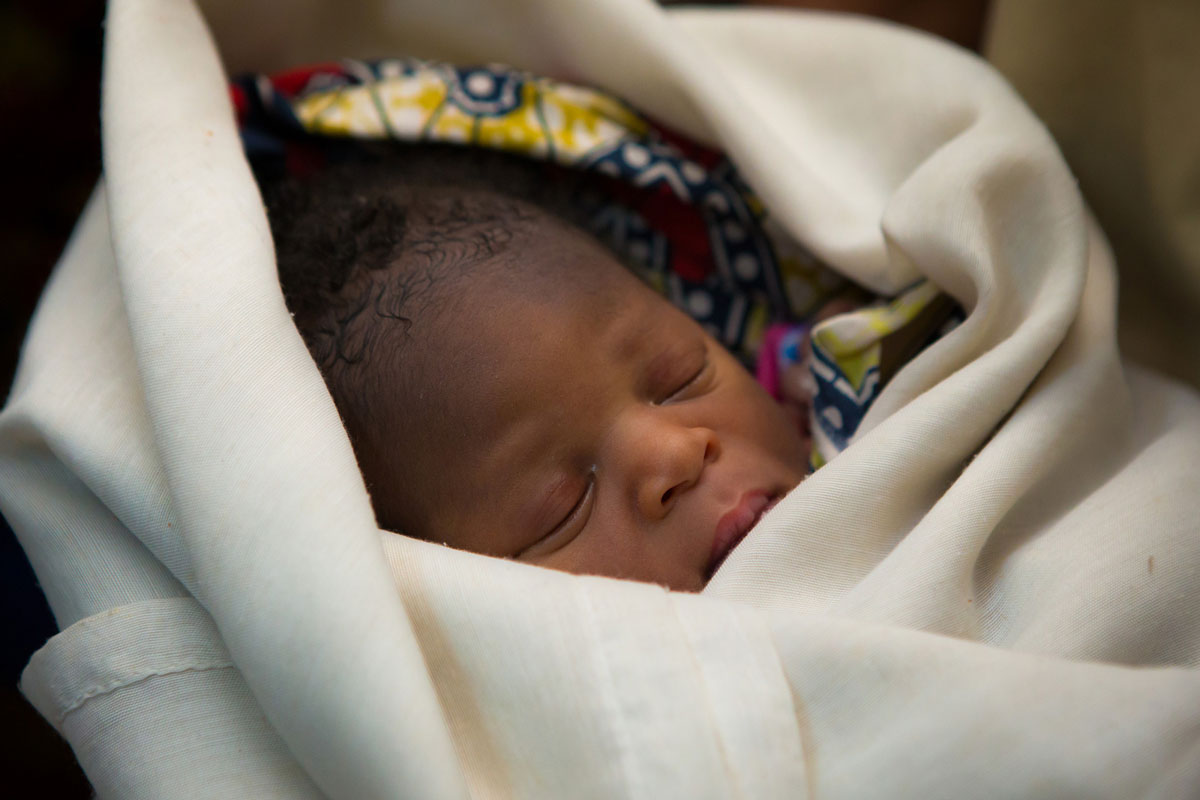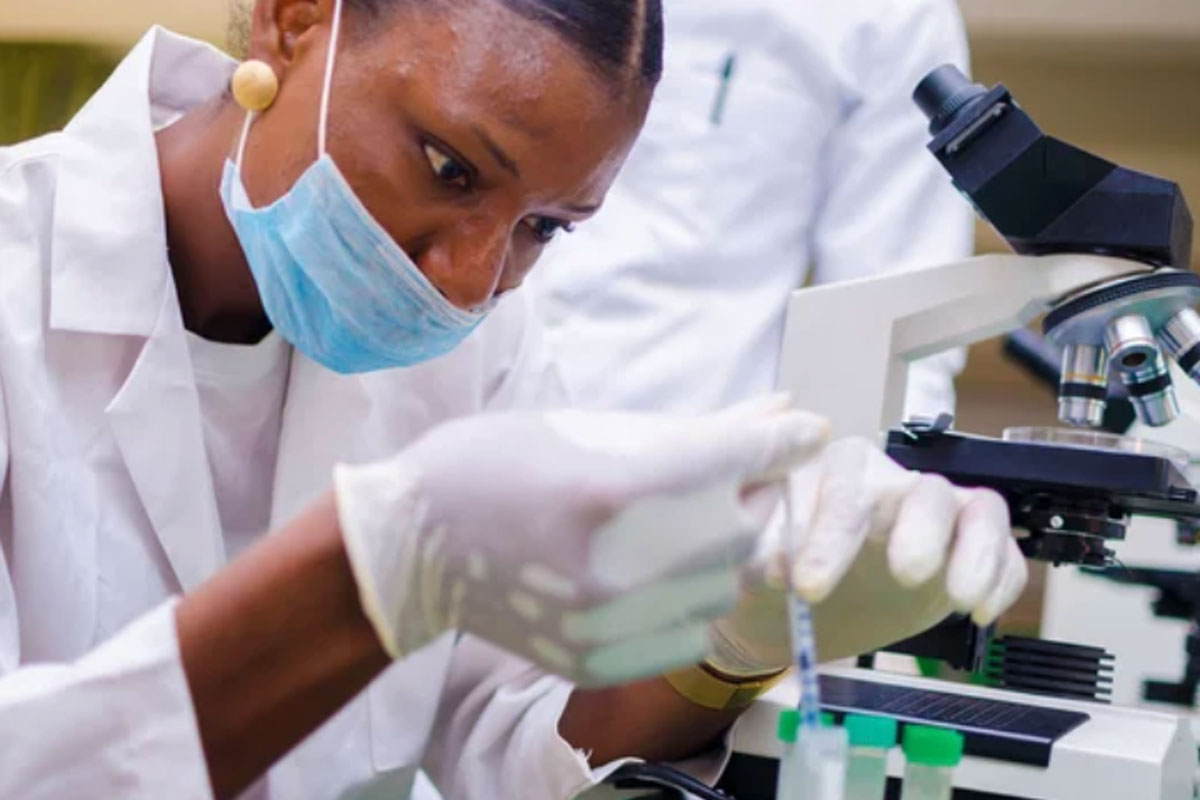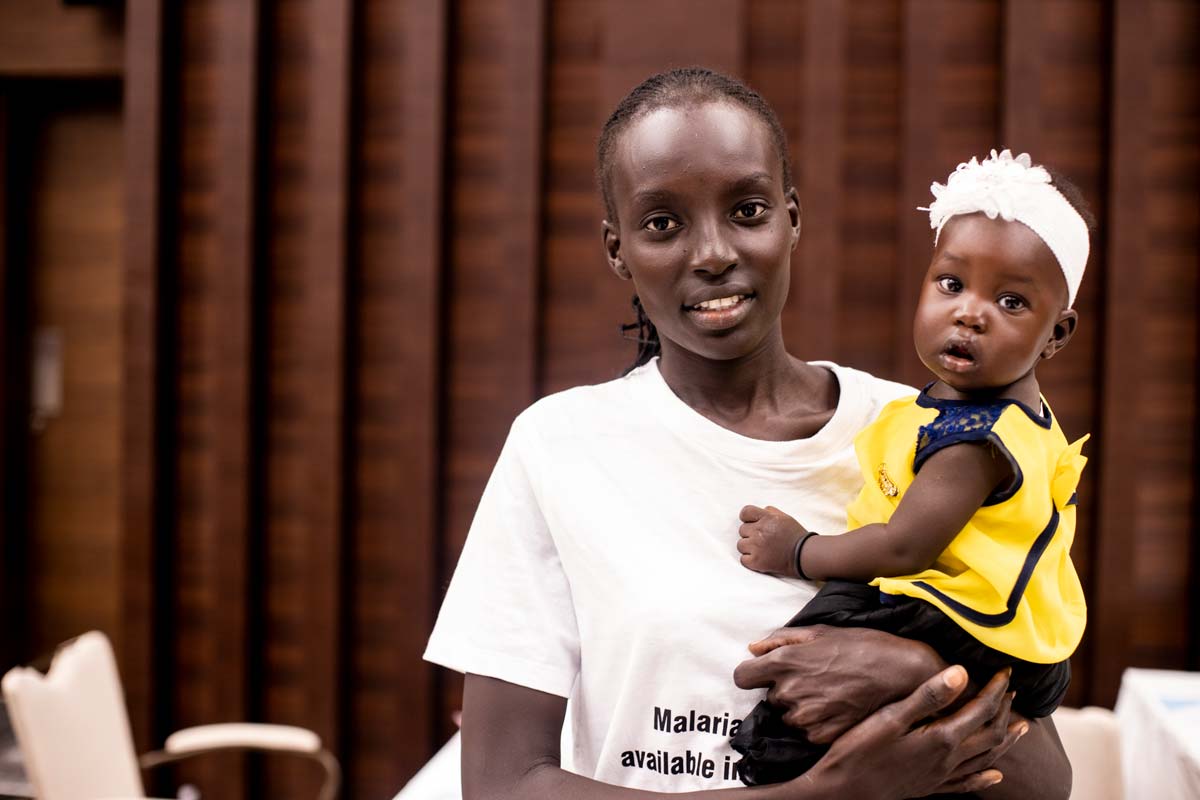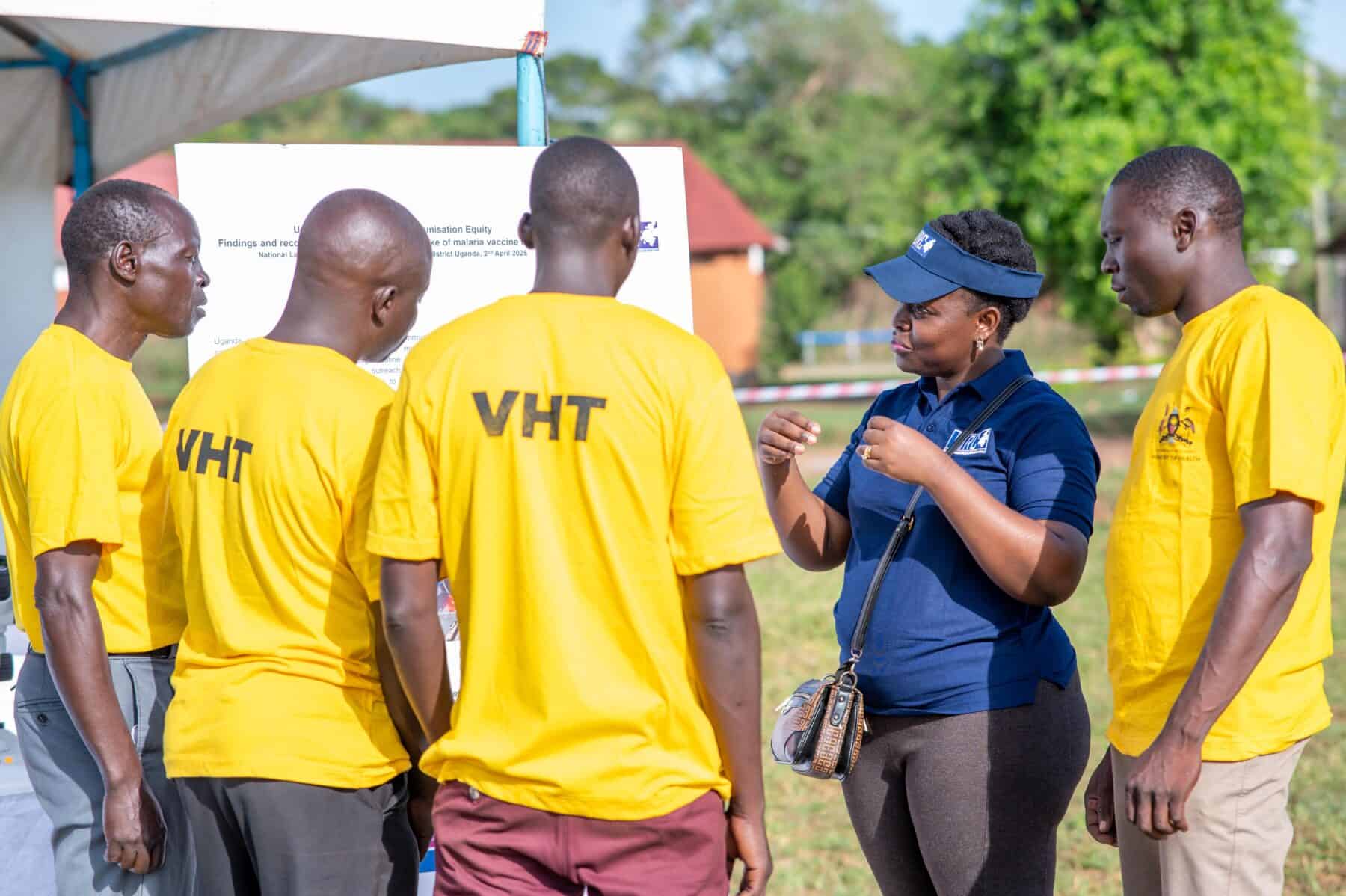Scaling up hepatitis B birth dose vaccination will save lives, and livers, experts say
On World Hepatitis Day, TV Padma surveys the damage caused by the hepatitis B virus in Africa – and looks ahead to the impact of Gavi-supported Hep B birth dose vaccine.
- 26 July 2024
- 8 min read
- by T V Padma

The anticipated roll-out in Africa of an affordable birth dose vaccine to fight hepatitis B, a viral infection that attacks the liver, is expected to bolster the fight against the virus in the region that bears the brunt of the disease.
Africa accounts for 63% of all new hepatitis B infections annually, “and yet only 18% of newborns in the Region receive the hepatitis B birth-dose vaccination,” a 2024 report of the World Health Organization (WHO) says.
Globally, an estimated 254 million people were living with the hepatitis B virus (HBV) in 2022, with 1.2 million new infections each year, and an estimated 1.1 million deaths, mostly following virus-precipitated cirrhosis and liver cancer. In 2022, WHO Africa had 3.6 million infected children under the age of five years, accounting for 64% of all children living with chronic hepatitis B.
“Hepatitis B control overall is currently underfunded and under-resourced. We have had the hepatitis B vaccine for over 30 years, we know it is safe and it works, but collectively we need to move as soon as possible to prevent future deaths associated with hepatitis B.”
- Catherine Freeland, associate director for public health research at the Hepatitis B Foundation
Common routes of transmission of the virus are from mother to child during delivery, contact with blood or other body fluids during sex with an infected partner, unsafe injections and exposures to sharp infected instruments.
Prevention from day one
WHO recommends1 that for prevention, countries should include three doses of hepatitis B vaccine in routine childhood immunisation schedules, with the first dose given to infants within 24 hours of birth.
Only 15 of the 47 countries in the WHO African region have introduced the birth dose vaccine so far. Gavi, the Vaccine Alliance plans to support vaccination at birth with a hepatitis B vaccine in 32 African countries eligible for its support that are yet to introduce the vaccine into their national immunisation schedules, Dr Simbarashe Mabaya, senior technical advisor and Gavi’s focal point for hepatitis B birth dose, says.
Gavi’s support covers procurement of vaccine and associated supplies such as injection safety devices, vaccine introduction grants, or technical assistance to help countries develop their plans to introduce the vaccine and develop their applications for Gavi support, says Dr Mabaya. Currently, Gavi is supporting the procurement of ten-dose vials of hepatitis B birth dose supplied by two manufacturers, Seoul-based LG Chem and Pune-based Serum Institute of India (SII).
Mapping Hep B
The first marker to indicate acute infection is the hepatitis B surface antigen (HBsAg), which can be detected in the first week. Its overall prevalence in the African region is 5.8%, said Professor Wendy Spearman, who heads the hepatology division at the University of Cape Town’s faculty of health sciences, in an interview with VaccinesWork. West Africa has the highest prevalence of HBsAg at 9%, followed by central Africa at 6.4%, east Africa at 4.8% and southern Africa at 4.5%.
As a result of low hepatitis B birth dose vaccination coverage, the African region was the only WHO region that did not reach the interim goal of reducing the HBsAg prevalence in children under five years to less than 1% by 2020, Professor Spearman explains.
WHO has committed to the elimination of mother-to-child transmission (MTCT) of HBV, with a target of no more than 0.1% prevalence of HBsAg in children under five by 2030, along with more than 90% coverage with timely hepatitis B vaccine birth dose2, noted Catherine Freeland, the associate director for public health research at the Hepatitis B Foundation, who has conducted studies on the infection in Nigeria.3
The hepatitis B birth dose has been shown to be one of the most effective strategies of eliminating this route of transmission, if implemented with education and support to health care workers involved in labour and delivery, antenatal and postnatal care services, and immunisation services.4
Bolstering birth dose access to WHO targets particularly in Africa has the potential to save lives at large scale. Doing so in just Africa’s most populous nation, Nigeria, would already reduce the global hepatitis B related deaths by 30%, Freeland points out. .
Looking ahead: high hopes, and some hurdles
“The impact [of the hepatitis B vaccine birth dose] will significantly reduce the incidence of HBV in the region,” adds Nigeria-based Danjuma Adda, former president of the World Hepatitis Alliance, a global network of 300 organisations across 100 countries striving to eliminate hepatitis by 2030. Currently only 18% of babies received the hepatitis B birth dose vaccine within 24 hours of birth. “We expect that in the long term, liver cancer mortality rate will decline in the Africa region.” Hepatocellular carcinoma is the second-leading cancer in men and third in women in sub-Saharan Africa, with 66% cases linked to chronic hepatitis B infection.
So, expanding access to the birth dose will make a major dent in hepatitis B-linked disease, but the elimination challenge doesn’t end there.
Hepatitis B vaccination programmes need access to both the monovalent vaccine for the birth dose and in adults, and the hexavalent or pentavalent vaccine for universal vaccination, Professor Spearman argues. “Access to the monovalent vaccine, which comes as a single dose or multidose vial, has been less accessible in Africa due to the limited demand,” she adds. In that way it differs from the universal hexavalent or pentavalent vaccine, which is more readily available.
Moreover, more can be done to block off that key mother-to-child transmission pathway. “Preventing mother-to-child transmission of hepatitis B by giving tenofovir prophylaxis to pregnant women testing positive for the infection and ensuring timely hepatitis B birth dose, vaccination followed by two to three doses of the universal hepatitis B vaccine is the cornerstone of any hepatitis B elimination programme,” Spearman says.
There have also been other barriers to timely hepatitis B vaccine coverage, including lack of policies for routine and timely birth dose vaccination; high proportion of births occurring outside of health facilities, (an estimated 30–40% births occur at home in the African region); lack of access to skilled birth attendants; and poor awareness of HBV among health workers, parents, and the general public about the safety, efficacy and benefits of hepatitis B vaccination, says Professor Spearman.
Have you read?
Gavi’s support to lower-income countries to implement the hepatitis B birth dose vaccination, which includes vaccine supply and distribution, health promotion, and provider training, will have an impact in the reducing the infection prevalence children under five years, says Spearman. “However, these programmes must be sustainable by countries to have a long-term effect, and this will require dedicated domestic funding.”
Although the hepatitis B birth dose vaccine only costs less than US$ 0.30, the cost of the infrastructure required to implement the sustainable hepatitis B birth dose vaccination programmes must also be considered, she adds. People with the infection lack access to quality health care systems in a majority of African countries, and its management is expensive and mostly handled at urban tertiary healthcare facilities, adds Adda.
“Patients pay out of pocket for expenses related to diagnosis, antiviral therapy, monitoring, hospitalisation, and treatment of complications such as cirrhosis and liver cancer, which is often diagnosed too late for majority of patients,” Adda says. Other challenges include low numbers of skilled healthcare professionals in Africa, and stigma related to the infection.
Under-Diagnosis
The problem of inadequate vaccine supply is compounded by under-diagnosis of hepatitis B in Africa. “Hepatitis B is under-reported, under-diagnosed across of Africa,” where only 4.2% or 2.7 million cases are diagnosed , compared to 13% globally, says Adda. “However real-world evidence suggests lower percentage of people have been diagnosed, probably around only 2%,” he says.
There is no mass testing of populations like the one done in Uganda. The continent also produces few diagnostic kits and relies mostly on WHO-validated kits from Asia.
Molecular diagnostics are more expensive than the costs of one year of the antiviral therapy for hepatitis B, says Spearman. There is limited access to non-invasive tests that are now recommended to assess for advanced fibrosis or the formation of abnormally large scar tissue in the liver, and cirrhosis, says Spearman. “The success of decentralisation and task-shifting of management of chronic hepatitis B to primary and community level care will depend on the access to affordable and reliable point-of-care diagnostics,” she points out.
Hepatitis B control overall is currently underfunded and under-resourced, says Freeland, welcoming Gavi’s initiative. “We have had the hepatitis B vaccine for over 30 years, we know it is safe and it works, but collectively we need to move as soon as possible to prevent future deaths associated with hepatitis B.”
2 WHO, EMTCT Global Validation Advisory Committee. Global Guidance on Creating a Process for Validation. Elimination of Mother-to-Child Transmission of HIV, Syphilis and Hepatitis B Virus. (WHO, ed.).; 2021.
3 Freeland C, Kanu F, Mohammed Y, Nwokoro UU, Sandhu H, et al. (2023) Barriers and facilitators to hepatitis B birth dose vaccination: Perspectives from healthcare providers and pregnant women accessing antenatal care in Nigeria. PLOS Global Public Health 3(6): e0001332. https://doi.org/10.1371/journal.pgph.0001332
Freeland, Catherine, "Strategies for Improving Hepatitis B Birth Dose in Nigeria" (2023). ProQuest ETD Collection - Thomas Jefferson University. AAI30425011.
https://jdc.jefferson.edu/dissertations/AAI30425011
4 de Villiers MJ, Nayagam S, Hallett TB. The impact of the timely birth dose vaccine on the global elimination of hepatitis B. Nat Commun. 2021;12(1):1-10. doi:10.1038/s41467-021-26475-6








